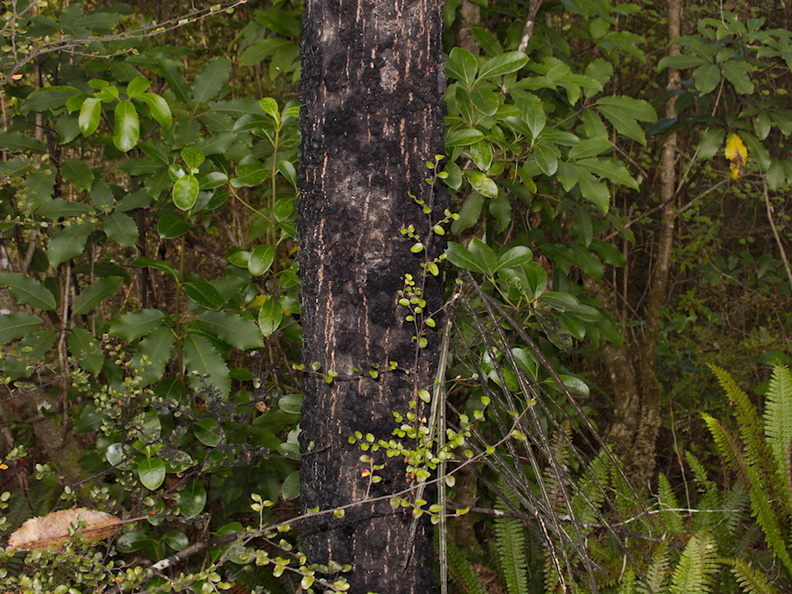
A sooty mold causes the black color. It grows on the honeydew secreted by scale insects, which also feeds a whole suite of native (and now non-native) insects and animals.

A sooty mold causes the black color. It grows on the honeydew secreted by scale insects, which also feeds a whole suite of native (and now non-native) insects and animals.